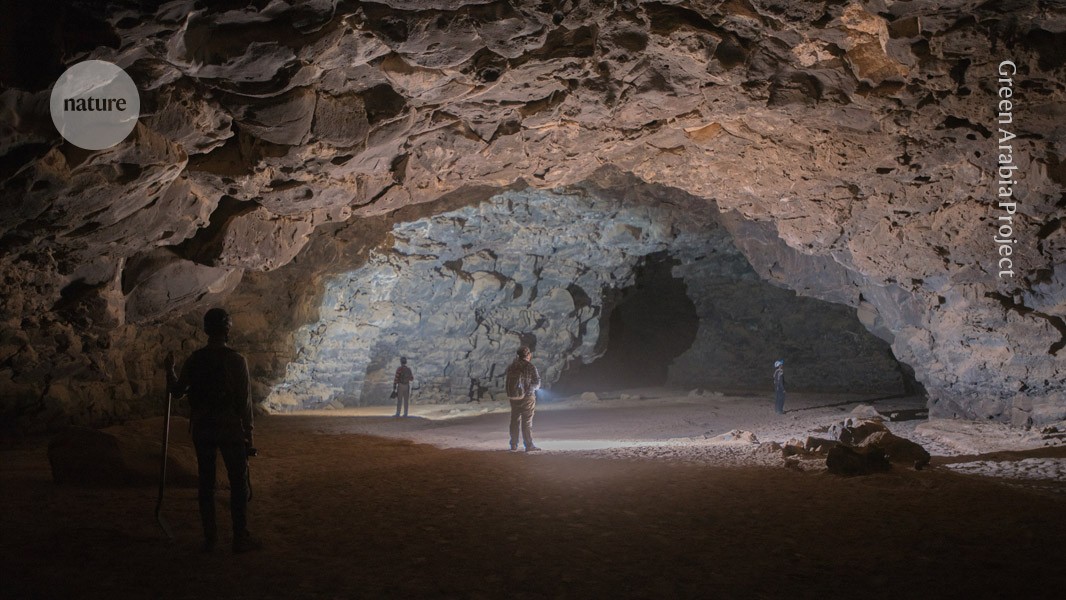The researchers turned to caves under Harrat Khaybar, a vast basalt plain pocked with volcanic craters in northwestern Saudi Arabia. The caves were made by lava as it flowed from nearby volcanoes, forming rocky tunnels as it cooled.
An excavation near the entrance of one cave produced more than 600 animal and human bones and 44 stone-tool fragments. The oldest stone tools dated back to as many as 10,000 years ago, and the oldest human bone fragments were almost 7,000 years old. The study was published on 17 April in PLoS ONE1.
The distribution of samples suggests that people did not live in the cave for long periods, but stayed there occasionally. Nearby rock art depicts people with goats and sheep. The drawings are difficult to date, but they support the fossil evidence that people used the cave as a place to rest and shelter their herds. Even today, farmers seek shade and water in underground lava tubes for themselves and their animals, says Stewart.


